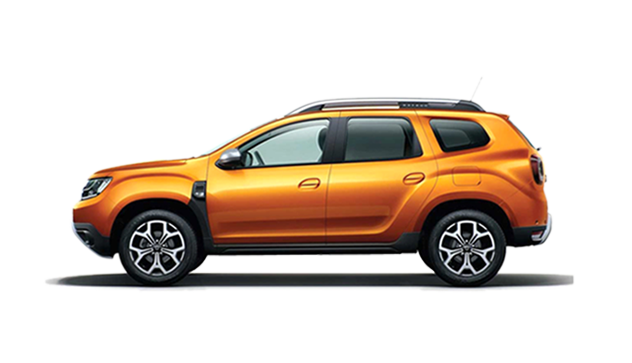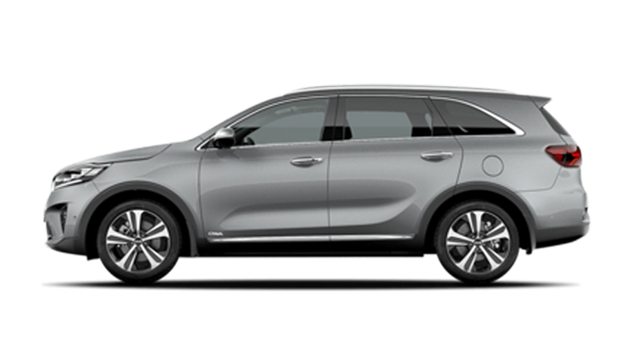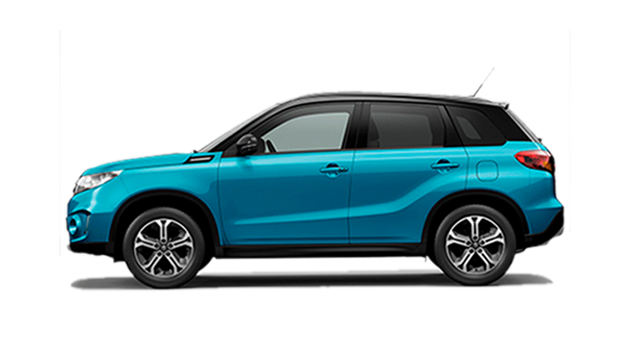Many wonder, “Is Iceland cheap?” before planning their trip. Iceland is often considered an expensive country to visit, even by western standards. Without local tips and smart planning, it can be easy to rack up bills while exploring the Land of Fire and Ice.
We’ll help you have a memorable road trip without breaking the bank! This is your ultimate guide to traveling Iceland on a budget.
Why is Iceland Considered Expensive?
While it can feel frustrating that Iceland is so expensive, there are several factors that contribute to its spendy reputation.
The cost of food in Iceland is often one of the most costly parts of a trip. Food is more expensive here because many items are imported due to the country’s isolation — especially produce. Iceland also has a very limited growing season, which makes it more difficult to cultivate fruits and vegetables. Import taxes also affect goods like bottled water and toiletries.
As of early 2025, dining out in Iceland can be quite expensive. A meal at an inexpensive restaurant typically costs between 2,000 to 5,500 ISK, while a three-course meal for two at a mid-range restaurant ranges from 10,000 to 30,000 ISK. Fast food options, are priced around 2,500 ISK. It’s also worth noting that food inflation in Iceland has been significant. As of January 2025, the cost of food increased by 4.2% compared to the same month in the previous year.
Accommodation is another factor that’s often more expensive than visitors expect. Most of this is due to high demand and prices sky rocket in the summer high season. Utilities like electricity and water are also at a premium in Iceland and expensive commodities that can cause prices to surge. Housing across the island in general is limited.
Exchange rate can also impact the cost of your trip to Iceland. Some years have a better exchange rate than others but the Icelandic Krona has been strong in recent years.
At the end of the day, Iceland may have a higher cost of living than most travelers are used to, but savvy visitors can find ways to save money.
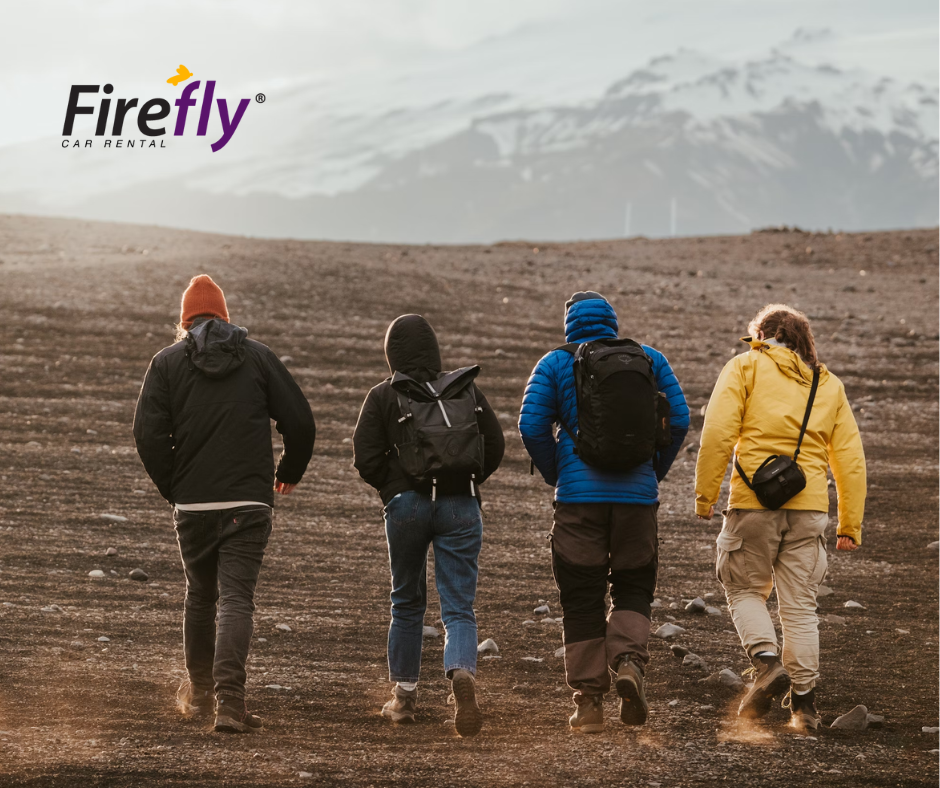
Budget-Friendly Tips for a Road Trip in Iceland
We’ve gathered together our local intel to help you travel Iceland inexpensively. Here are our ultimate, budget-friendly tips to keep your visit to Iceland cheap!
Rent a Cheap Car for Your Iceland Adventure
Renting a car is often the best way to explore Iceland’s stunning landscapes. You’ll have the freedom to explore this stunning country, discovering off-the-beaten-path sights without having to stick to tour schedules.
While public transport is available in Reykjavik and some towns, it is very limited outside the city, making car rental the most practical and cost-effective way to travel. Buses between different regions are infrequent and expensive, meaning self-driving is the best option for seeing Iceland at your own pace—especially if you plan on doing the Ring Road trip around the island.
Firefly Iceland is one of the most affordable rental car agencies in the country, offering cheap prices and reliable vehicles. Most vehicle models are only a few years old, and you’ll find everything from a standard sedan to 4×4 SUVs on offer. Every set of keys is equipped with a discount gas card, too, which will further help you save on the road.
When choosing a rental car in Iceland, consider your travel month and itinerary. If you plan to visit during the summer (June to August) and stick to paved roads, a 2WD car like the VW Golf or VW Up is an excellent budget-friendly choice. Iceland’s main roads, including Route 1 (the Ring Road) and roads to major attractions like the Golden Circle, are well-maintained, making a 2WD car sufficient for summer trips.
However, if you’re visiting in winter (October to April), or planning to explore the Westfjords or Iceland’s F-roads in the highlands, a 4WD vehicle like the Dacia Duster or Mitsubishi Pajero is a safer choice. These vehicles provide better traction on snowy or icy roads and are essential for rougher terrain. Remember, F-roads (mountain roads) are only open in summer, and 2WD cars are not allowed on them, so make sure to pick a 4×4 if you’re heading to the highlands.
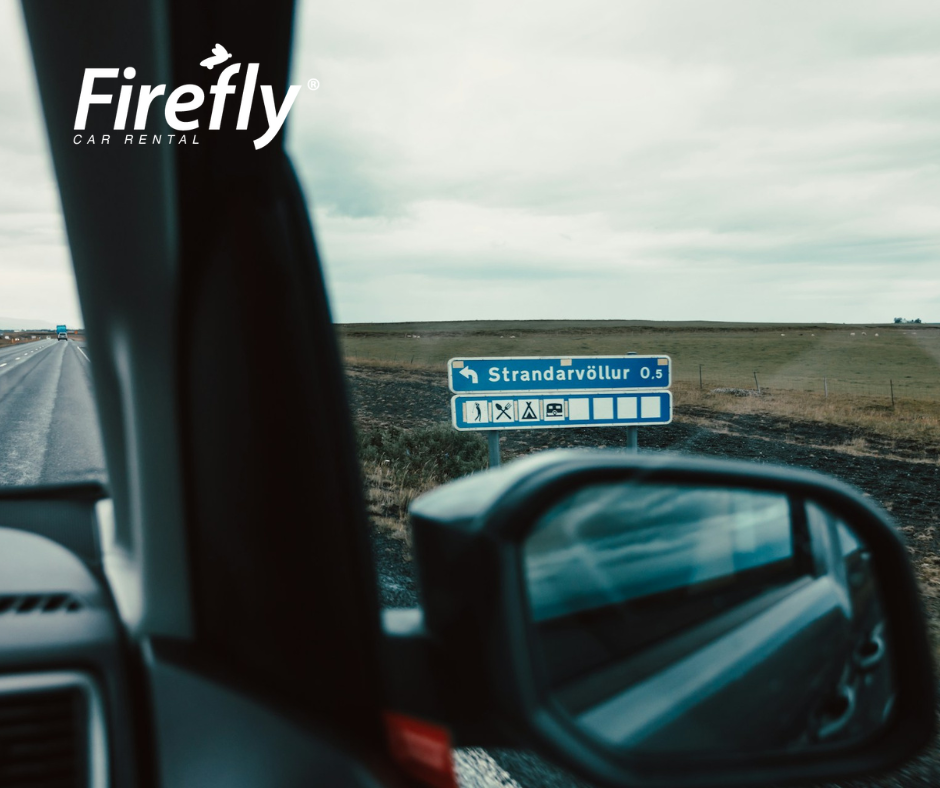
The Longer You Rent, The Cheaper the Daily Rate
Another great way to save money on car rentals in Iceland is by booking for a longer period. At Firefly Iceland, the daily rental rate drops the more days you rent, making longer trips more cost-effective. On average, renting a car for 7-10 days gives you the cheapest per-day rate, often saving 20-30% compared to short-term rentals of 1-3 days. This is especially beneficial for those planning a Ring Road trip or exploring multiple regions like the Golden Circle, South Coast, and Snæfellsnes Peninsula. Plus, with unlimited mileage included, you can see more of Iceland without worrying about extra costs!
How Cheap is Firefly Iceland?
Firefly Iceland is one of the cheapest rental car companies in the country while still offering well-maintained, high-quality vehicles. Unlike many other rental companies, Firefly specializes in budget-friendly options, often providing older model cars at lower rates. These cars are just as reliable as brand-new ones, and by choosing a slightly older model, you can save a significant amount on rental costs.
For example, a VW Polo or VW Up can be rented for a fraction of the price of a brand-new SUV, making it perfect for travelers who want to explore Iceland affordably. Even larger vehicles like the Dacia Duster 4WD are available at lower prices compared to competitors, making it possible to drive comfortably without stretching your budget.
By choosing Firefly, you’ll spend less on your rental car and have more money for experiencing Iceland’s incredible landscapes. Whether you’re doing the full Ring Road trip or just exploring Reykjavik and the Golden Circle, renting a car from Firefly is the best way to travel affordably in Iceland.

Opt for Self-Catering Accommodation in Iceland
There’s no doubt that accommodation is one of the most expensive costs in Iceland. Even bare bones hotels can run over $200 a night! Try to book mid-range and budget accommodations like hostels and B&Bs that have kitchen facilities, which will also help you save on food expenses.
Iceland has delicious ingredients that make it fun to go grocery shopping and try out new recipes, including skyr (Icelandic yogurt) and flatkokur bread.
Planning ahead is a good idea if you’re shopping around for inexpensive accommodation. Book well in advance as rates often climb that closer you get to your arrival. Visitors will also find that hotels and hostels in the capital of Reykjavik can be much more expensive than a simple B&B in the countryside.
Seasonality is another big factor when finding cheap places to stay in Iceland. Those who are traveling during the summer months have the added benefit of being able to camp.
Iceland is a wonderful country to pitch a tent in from June to August with plenty of campsites available. In the off season, from October to March, prices generally drop significantly. This is a great way to see Iceland on a budget — and you might even catch a glimpse of the northern lights!
Save Money on Food and Drink
Eating out is possibly the most expensive factor of a trip to Iceland. Visitors who eat all of their meals in restaurants will spend much more than someone who does their own grocery shopping!
While Icelandic food is unique and delicious, the country isn’t quite as well known for its cuisine as others around the world making it a little easier to skip out on restaurants. Instead, opt for grocery shopping and cooking in your accommodation, easily half the price of eating out!
For those who do want to sample Icelandic food in a local restaurant, choose eateries that are outside the capital city or find local delicacies like Icelandic hot dogs at gas stations and street vendors. Believe it or not, Icelandic hot dogs are an iconic meal in the land of Fire and Ice!
- Related reading: 6 Best Cheap Eats in Iceland: grab a bite for $15 or less
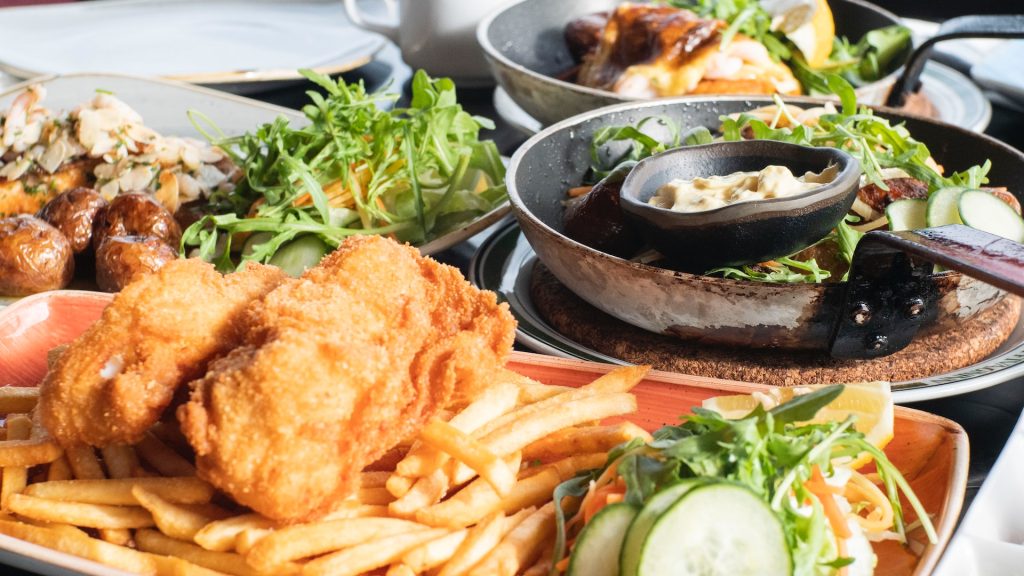
Plan Ahead for Attractions
One wonderful thing about traveling Iceland on a budget is that many of the country’s best attractions are completely free to visit!
You’ll find free natural hot springs, waterfalls, black sand beaches, glaciers, geysers, and national parks all across Iceland. If a fee is required, it is generally very small. Even iconic areas like the Golden Circle are free for visit (you still need to pay for parking)!
Some activities, like seeing puffins and watching for the northern lights, are DIY friendly meaning that you can easily do it yourself with a rental car without the need to hop on a pricey tour.
You can easily experience the best of Iceland without partaking in more expensive activities like snowmobiling, visiting the Blue Lagoon, and whale watching. If you do decide you can’t leave without experiencing a more expensive activity, have peace of mind knowing that your other activities will be free of cost.
Money-Saving Tips for Planning and When in Iceland
Book Flights and Accommodation Early
If there’s one rule of thumb you should follow when planning a trip to Iceland, it’s to start booking early!
All flights, rental car and accommodation should be secured months, if not a year, in advance. This is especially true if you’re hoping to visit Iceland in the summer months, when prices are at an all-time high.
Booking early will also allow you to book mid-range accommodation, which are often snatched up early by fellow budget-minded adventurers. Even if you’re planning to visit in the off season, it’s a good idea to book at least a 2 months in advance.
Travel in the Off-Season
Traveling in the off-season is one of the best ways to save money in Iceland while still experiencing its breathtaking landscapes. The off-season typically spans from October to March, covering late fall, winter, and early spring. During these months, visitors will find significantly lower prices on flights, accommodation, and rental cars, making it the most budget-friendly time to visit.
How Much Can You Save in the Off-Season?
The price difference between peak summer and the off-season can be huge, often cutting costs by 30-50% across different travel expenses:
- Flights: A round-trip flight from the US or Europe to Reykjavik can cost $300-$500 in winter, compared to $800-$1,200 in summer. Budget airlines like PLAY and Icelandair offer frequent discounts during the winter months.
- Accommodation: A mid-range hotel in Reykjavik that costs $250+ per night in July can drop to $120-$150 in winter. Even hostels and guesthouses that are $80-$100 per night in summer can go down to $40-$60 in the off-season.
- Rental Cars: Car rentals see one of the biggest price drops in winter. A compact 2WD car, which costs $90-$150 per day in summer, can be as cheap as $40-$60 per day in winter. Even 4WD vehicles, which are necessary for winter driving, drop from $150-$250 per day in summer to $70-$120 in winter. Firefly Iceland offers some of the cheapest winter rental rates, making it even easier to explore Iceland on a budget.
- Tours & Attractions: Some activities like snowmobiling, glacier hikes, and ice cave tours are winter-exclusive but often come with discounts for early bookings. Popular attractions like the Blue Lagoon and Sky Lagoon also offer lower-priced slots in the off-season.
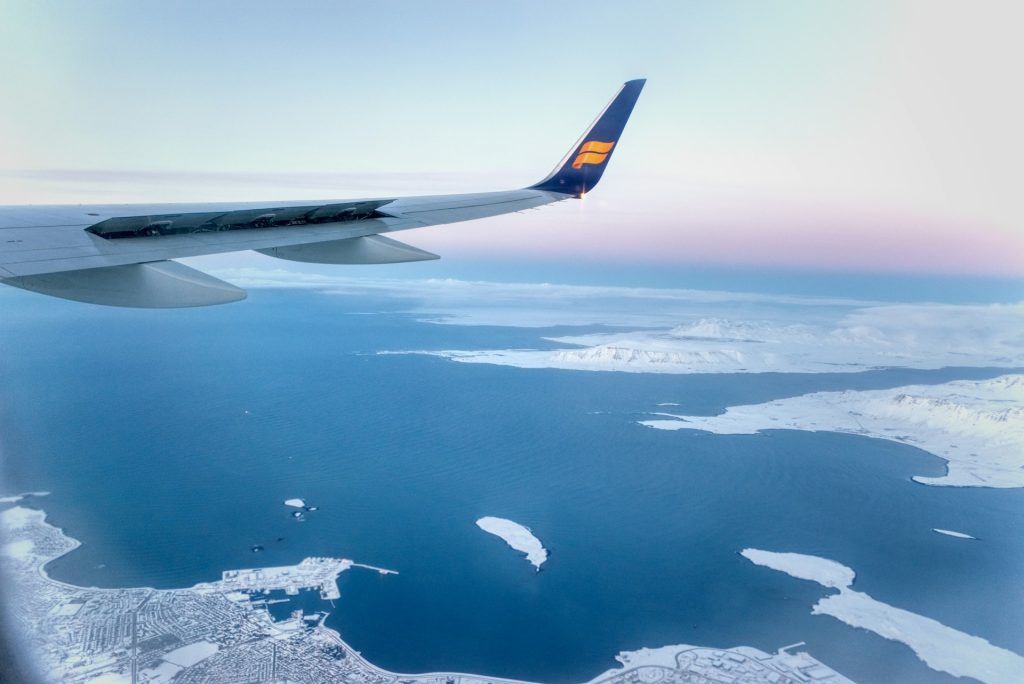
The Cheapest Months to Visit Iceland
If you’re looking for the absolute cheapest time to travel to Iceland, aim for these months:
- November and January to early March: These months have the lowest prices for flights, accommodation, and car rentals. It’s also prime Northern Lights season.
- Late October and late March: Shoulder season months where you can find great deals while still enjoying some daylight and mild winter conditions.
- April and September: These are considered low-season shoulder months, where prices are lower than peak summer but slightly higher than full winter rates. The weather is also milder, making them great for a budget-friendly trip without extreme winter conditions.
Why Travel in the Off-Season?
Although winter has fewer daylight hours (4-6 hours in December and January), it is the only time of year when you can:
- See the Northern Lights – With long, dark nights, your chances of witnessing the aurora borealis are highest between September and April.
- Explore Ice Caves – Natural blue ice caves in glaciers like Vatnajökull only form in winter and are a must-see.
- Experience Iceland’s Winter Wonderland – Snow-covered landscapes, frozen waterfalls, and frost-covered lava fields create a magical setting for photographers.
- Enjoy Fewer Crowds – Iceland’s most popular sites, like Seljalandsfoss, Skógafoss, and Jökulsárlón Glacier Lagoon, are significantly less crowded compared to summer.
If you don’t mind chilly temperatures (-1°C to -10°C / 30°F to 15°F in winter) and are comfortable driving on winter roads, traveling in the off-season is the best way to see Iceland at half the price of summer!
- Related reading: A guide to Iceland’s climate year round

Skip Buying Bottled Water
While it can be tempting to buy bottled water when you’re on the go in another country, Iceland has some of the world’s cleanest tap water. There’s truly no need to spend any money on bottled water!
Simply bring your reusable water bottle and fill it up at guesthouses and hotels along the way. While this may seem like a silly tip, it can save a lot of money along the way in Iceland — and it’s better for the environment!
Free or Cheap Attractions
As mentioned, many of Iceland’s natural attractions, including waterfalls, beaches, hot springs, and glaciers, are completely free or have very cheap entrance fees. You’ll no doubt have many of these sights on your list and you can plan your itinerary around visiting these areas specifically to maximize your savings.
If you do want to visit the ever famous Blue Lagoon, try to book early to snag the less expensive slots. There are also much more affordable alternatives like the Secret Lagoon, Myvatn Nature Baths, and even natural hot springs which you’ll find scattered across the country! Many of these more natural pools are managed by locals.
Take Advantage of Free Outdoor Activities
Iceland is a paradise for outdoor lovers, and the best part? Many of its top attractions and activities are completely free! Whether you’re into hiking, sightseeing, or wildlife watching, you’ll find plenty of ways to experience Iceland without spending a fortune. Here’s a more detailed list of free activities you can enjoy:
1. Chase Iceland’s Stunning Waterfalls
Iceland is home to hundards of waterfalls, and most of them can be visited for free! Some of the best ones to add to your itinerary include:
- Seljalandsfoss – A famous waterfall where you can walk behind the cascading water.
- Skógafoss – A powerful 60-meter-high waterfall with a scenic staircase leading to breathtaking views.
- Gullfoss – One of Iceland’s most iconic waterfalls, part of the famous Golden Circle.
- Dynjandi – A majestic, multi-tiered waterfall in the Westfjords, considered one of Iceland’s most beautiful.
- Kirkjufellsfoss – Located near the photogenic Kirkjufell mountain on the Snæfellsnes Peninsula.
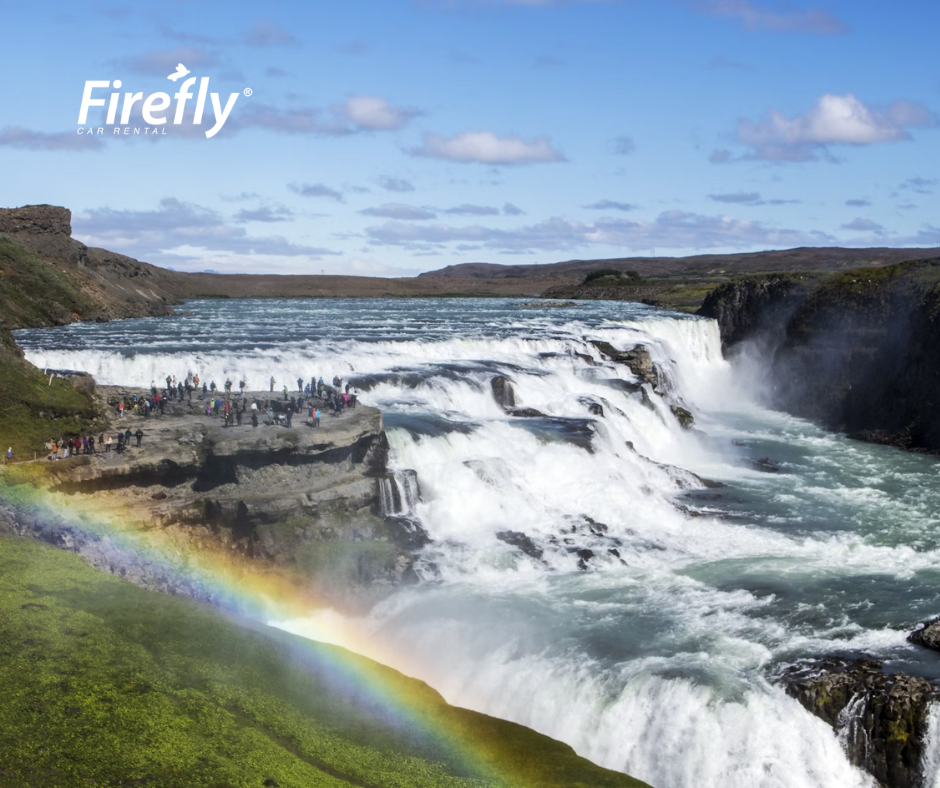
2. Hike Through Iceland’s Diverse Landscapes
Hiking is one of the best ways to explore Iceland’s raw and rugged landscapes. Some of the most scenic free hiking trails include:
- Glymur Waterfall Hike – A moderate 3-4 hour hike leading to Iceland’s second-highest waterfall.
- Landmannalaugar Trails – A summer-only hiking area with colorful rhyolite mountains and hot springs.
- Reykjadalur Hot Spring Hike – A 1-hour hike leading to a natural hot river where you can bathe for free.
- Fimmvörðuháls Trail – A long but rewarding volcanic trek between Skógafoss and Þórsmörk.
- Hornstrandir Nature Reserve – A remote area in the Westfjords, great for arctic fox spotting and wild camping.
3. Visit Iceland’s Geothermal Wonders
Iceland is filled with geothermal landscapes, and many of them are free to visit:
- Geysir Geothermal Area – Home to Strokkur, a geyser that erupts every 5-10 minutes.
- Hverir Geothermal Field – A Mars-like landscape filled with bubbling mud pots and steam vents in North Iceland.
- Seltún Geothermal Area – A colorful, sulfur-rich area with steaming hot springs near Reykjanes Peninsula.
4. Soak in Free Natural Hot Springs
While the Blue Lagoon and Sky Lagoon are expensive, many natural hot springs in Iceland are completely free:
- Reykjadalur Hot River – A geothermal river where you can bathe after a short hike.
- Seljavallalaug Pool – One of Iceland’s oldest outdoor pools, located in a stunning valley.
- Hoffell Hot Tubs – A set of natural hot tubs with a view of glaciers in East Iceland.
- Landbrotalaug – A tiny but cozy natural hot spring on the Snæfellsnes Peninsula.

5. Experience Iceland’s Unique Wildlife for Free
You don’t need an expensive tour to see Iceland’s incredible wildlife:
- Puffin Watching – Best from May to August at free viewing spots like Dyrhólaey and Borgarfjörður Eystri.
- Seal Watching at Ytri-Tunga Beach – A great free location to spot seals up close.
- Whale Watching from Shore – Husavik and Reykjavik may have pricey boat tours, but you can often see whales from Ólafsvík or Hvalfjörður.
- Reindeer in East Iceland – During winter, wild reindeer can often be seen roaming in East Iceland’s open plains.
6. Stand Between Two Continents
One of the coolest free experiences in Iceland is visiting Þingvellir National Park, where you can walk between the North American and Eurasian tectonic plates. The park is part of the Golden Circle and is completely free to enter.
7. Hunt for the Northern Lights (September – April)
Instead of paying for a northern lights tour, rent a car and drive to a dark area outside the city. Some great free viewing spots include:
- Thingvellir National Park
- Grótta Lighthouse (near Reykjavik)
- Kirkjufell (Snæfellsnes Peninsula)
- Vik’s black sand beaches
Choose Public Swimming Pools Over High-End Spas
Most Icelandic towns have a heated, public swimming pool that the entire town enjoys and is inexpensive to visit. Swimming, it seems, is a national pastime for Icelanders!
Many of these swimming pools also have hot tubs and saunas and use geothermal water, known to be great for healing skin ailments. Visitors will find that entrance fees to the pool cost a fraction of tickets to luxury spas like the Blue Lagoon yet offer the same — or better — relaxation.

Pay Attention to Fuel Prices
Fuel prices are another sneaky expense when visiting Iceland. Due to the country’s geographic isolation, gas is often very expensive.
Still, prices often fluctuate. Several gas stations around the country, like Costco and Orkan, are also less expensive.
Luckily, the vehicles offered at Firefly Iceland are all fuel-efficient, which will help further keep costs down if you decide to rent a car.
Oftentimes, opting to hop on a tour instead of renting your own car can be more expensive than having your own set of wheels.
Use Credit Cards with No Foreign Transaction Fees
Iceland is a land of credit cards! Cash isn’t often used here. You’ll want to make sure that your credit card has no foreign transaction fees before traveling, which will help avoid an entirely unnecessary cost.
Simply call your bank to check your card’s policy before your trip.
Shop Duty-Free to Save on VAT
Shopping in Iceland can be expensive, largely due to the Value-Added Tax (VAT), which ranges from 11% to 24% depending on the item. Standard VAT on most goods, including clothing and electronics, is 24%, while a lower rate of 11% applies to food and books.
Fortunately, visitors can claim a VAT refund on purchases over 6,000 ISK (around $43 USD) from stores participating in the tax-free shopping program. However, the easiest way to avoid VAT entirely is by shopping at the duty-free store at Keflavík International Airport (KEF) before departing.
The Duty-Free Iceland store offers a wide selection of alcohol, cosmetics, perfumes, and Icelandic souvenirs at prices significantly lower than in regular Icelandic shops.

This is especially useful for buying alcohol, as liquor store prices in Iceland are notoriously high due to heavy taxation. By planning your shopping strategically, you can save a considerable amount on last-minute souvenirs and essentials before leaving the country!
Maximize Your Budget for a Summer or Winter Trip
As you can see, traveling in the winter versus the summer in Iceland can lead to huge savings. Travelers will see more budget-friendly prices even in the shoulder seasons of spring and fall!
Winter brings cheaper accommodation, flights, and even car rentals. You can also likely DIY your own northern lights viewing although tours, like ice caving and snowmobiling, come with hefty price tags. It can also be difficult to navigate Iceland in the winter due to snow and ice, a deterrent for many travelers.
Summer might offer longer daylight hours and the ability to camp, but almost everything else will be double winter prices! You’ll also be battling hordes of other tourists at popular destinations. On the other hand, summer is the only time of year to go on a whale watching tour and see puffins — which you can do for free with a rental car!
Overall, no matter which season you decide to visit Iceland, there are benefits and disadvantages. All of these budget-friendly tips will help you travel on the cheap whether you visit in summer or winter.
Conclusion
Sure, Iceland might be an expensive country to visit, but it’s well worth the added cost! Using these budget-friendly tips, like going grocery shopping, avoiding expensive tours, and booking in advance will help to keep your trip affordable and enjoyable.
Don’t forget to book your rental car with Firefly Iceland for reliable yet inexpensive vehicles that are perfect for exploring the Land of Fire and Ice on a budget!

